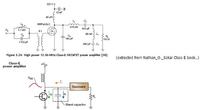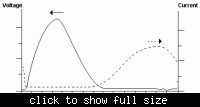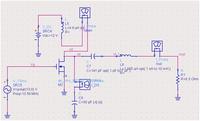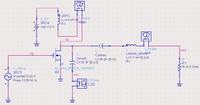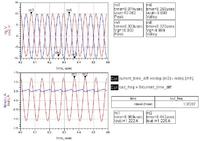kaixi
Newbie level 5
Hi does anyone has idea on designing a Class E power amplifier operating at 13.56Mhz?
The series LC should match the input frequency.
How about the value of L at drain and shunt C value?
For single ended design, the component should only include series LC, L at drain and shunt C across drain source right?
Resonating component will be C at drain source and series LC?
or only the series LC?
The series LC should match the input frequency.
How about the value of L at drain and shunt C value?
For single ended design, the component should only include series LC, L at drain and shunt C across drain source right?
Resonating component will be C at drain source and series LC?
or only the series LC?
